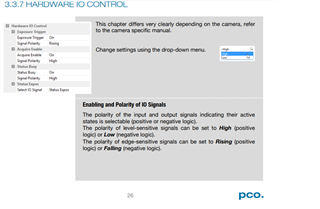Other Parts Discussed in Thread: DLPC900, DLP9000
Hi Team,
Can you please help us regarding our customer's inquiry below.
We purchased dlp6500 but finding it difficult to use for our image acquisition.
We need to capture phase shift of multiple frequency.
I want to capture an image with phase shift by uploading multiple frequency to dlp6500.
I would appreciate if i can get a video demo on this or online training.
How we can synchronize dlp6500 with camera, I have read the guide but no useful information on these two need.
Regards,
Danilo






